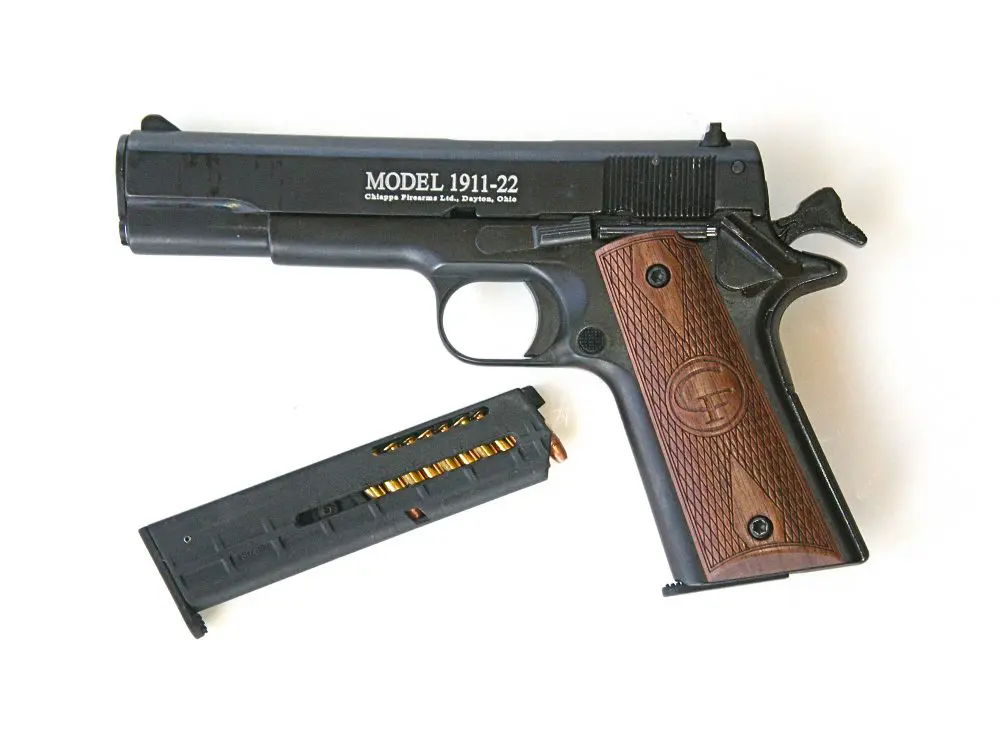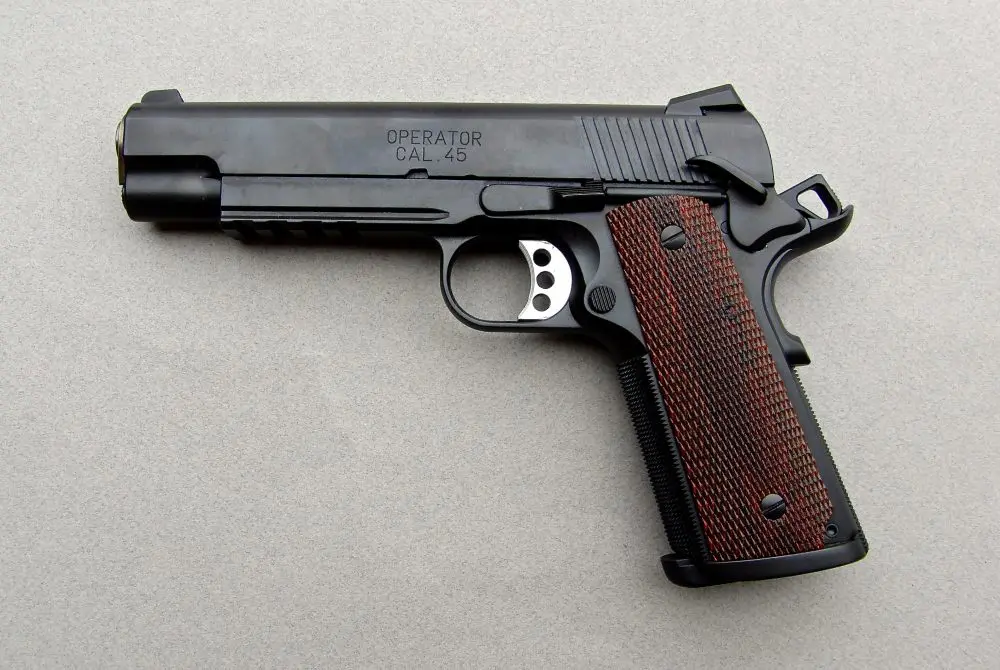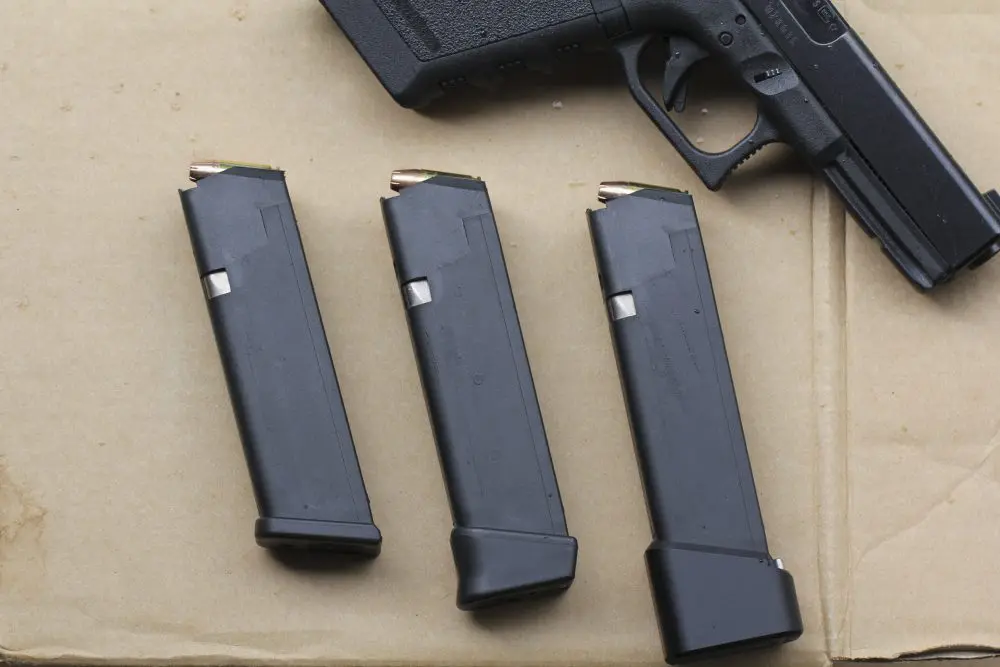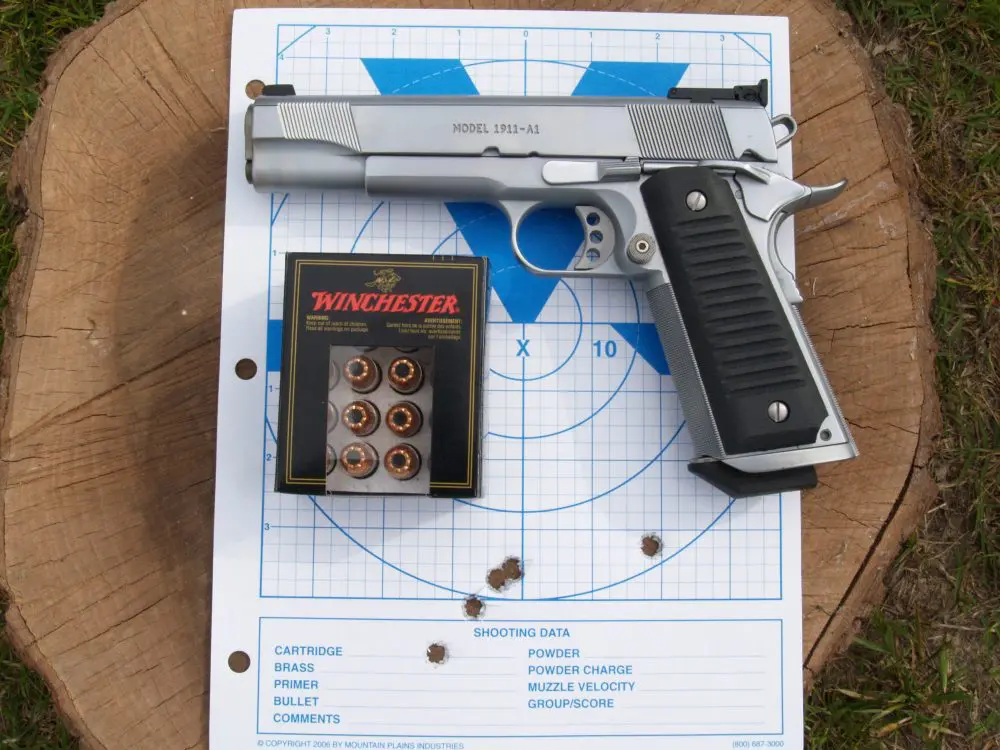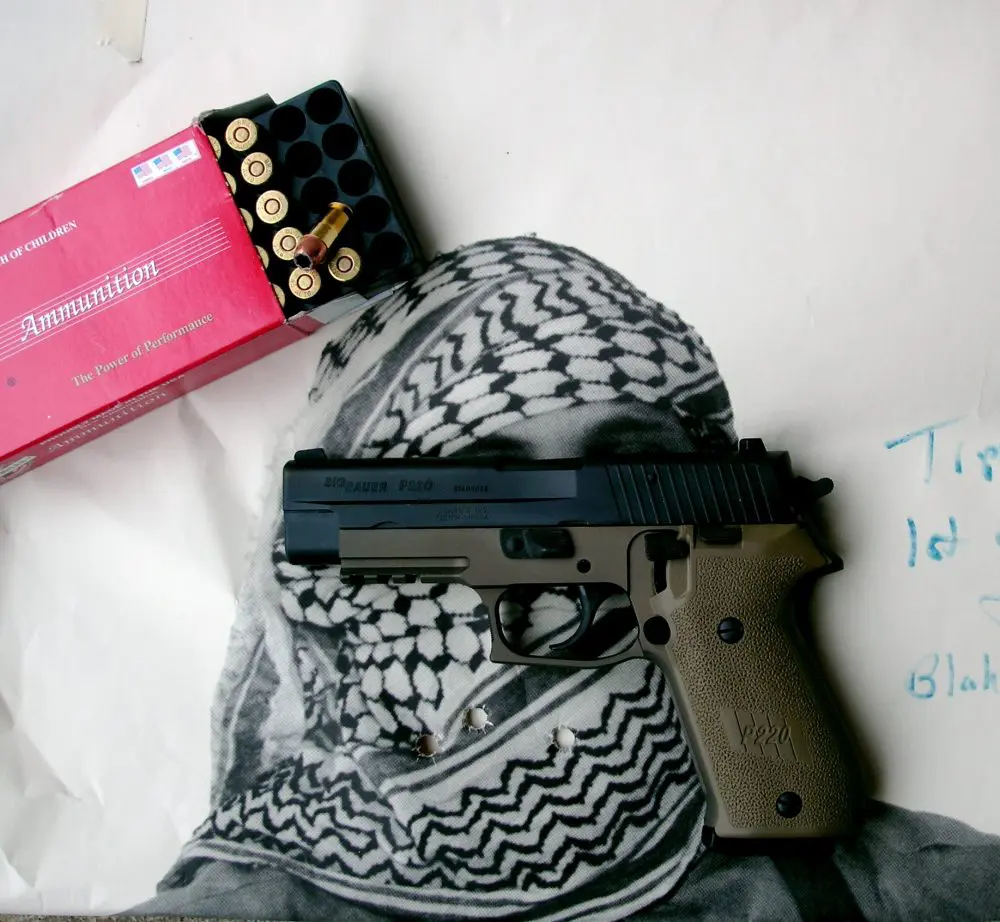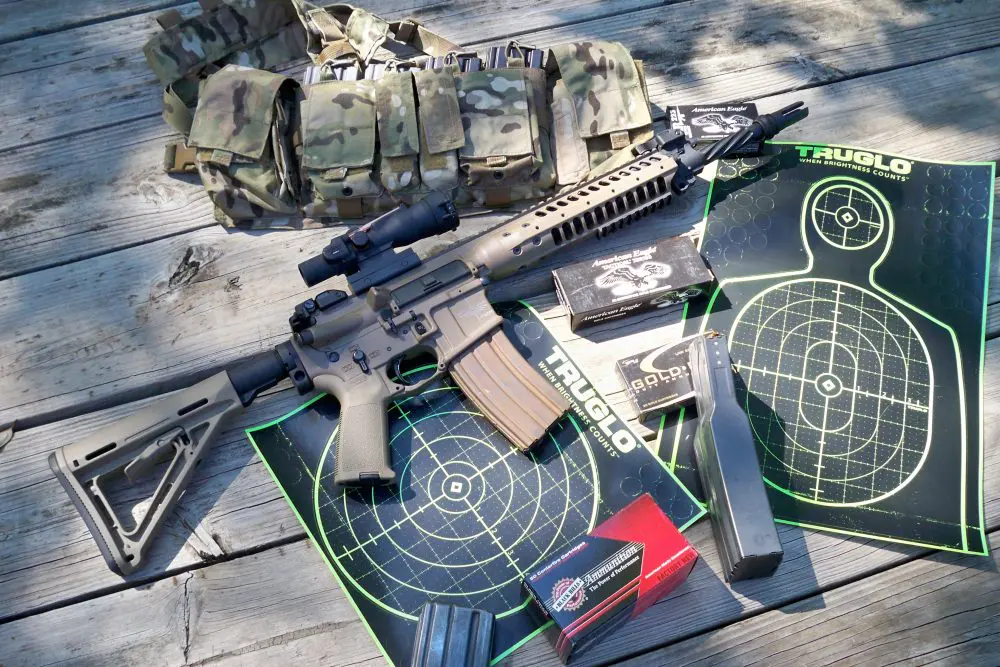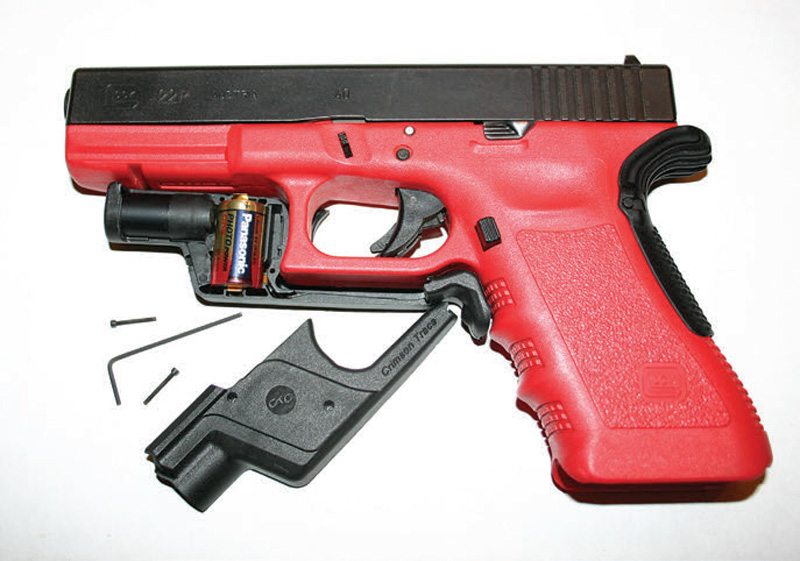
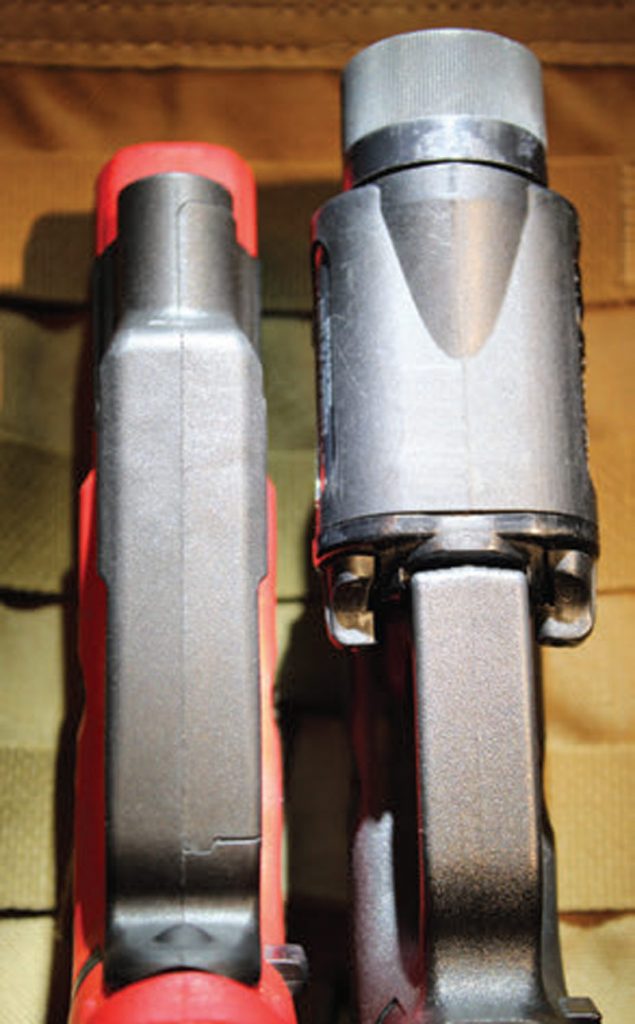
Handguns with weapon-mounted lights are becoming more and more common in the holsters of today’s professional soldiers, peace officers and prepared citizens.
A weapon-mounted light gives the shooter the ability to illuminate the source of possible trouble by identifying friend or foe while maintaining a twohanded grip or using the support hand to open/close doors, call emergency services, or push aside those you are protecting.
The downside is that most pistolmounted lights add additional bulk and weight to the weapon. It can be said that these lights were designed for duty use, not concealed carry, but that doesn’t take away from the fact that they can be downright uncomfortable to carry in an IWB holster all day.
Crimson Trace Corporation, makers of the popular Lasergrips® and Laserguard ® laser modules, decided it was time to step in with their first white light dedicated pistol illuminator. They call it the Lightguard™, and its concept and execution are awfully impressive.
The Lightguard uses a white LED with 100 lumens of output in a twopiece plastic housing. Two small screws and a supplied Allen wrench are used to combine the two pieces on the pistol.

An included single lithium CR2 battery powers the light, which is slightly different from the industry standard of CR123. Constant run time from the single CR2 battery is around two hours.
The Lightguard never exceeds the width of the pistol it is designed to fit. Because the LED and lamp are so compact, there is no bulbous bulge in a holster as there is with the Lightguard’s larger counterparts. The lamp does not protrude past the muzzle of the pistol, keeping the lens mostly crud-free while shooting.
The Lightguard is also lightweight, coming in at 1.4 ounces, with the battery installed. This makes the Lightguard easier to carry and conceal.
Activation of the Lightguard is simple and intuitive, via a pressure switch under the trigger guard, high on the pistol’s grip. Some do not like this, fearing a sympathetic trigger pull, but this is overcome through practice and keeping your finger off the trigger until you are ready to fire. The Lightguard is also equipped with a master on/off switch located just below the lens. There is absolutely no interference between the beam of a Lasergrip and the body of the Lightguard.
I found, in a dark room and on a dark night, that while the Lightguard doesn’t produce the same amount of light that larger duty-style lights do, it produces enough illumination to see perceived threat(s) at typical pistol engagement range—and that is exactly what it was designed for. Using a friend’s Glock G22P, I was able to fully illuminate an intruder from 15 meters in the house.
Durability is a key factor with any piece of equipment one uses for protection. I had some doubts about the polymer body of the Lightguard, but the light never failed after several intentional drops—while attached to a handgun or by itself—on various surfaces.
However, after some mild exposure to moisture on a muggy north-central Texas day, the supplied Panasonic CR2 battery failed and corroded inside the light. The Lightguard is not marketed as waterproof or water resistant, but this causes me concern, as it is a light designed for carry.
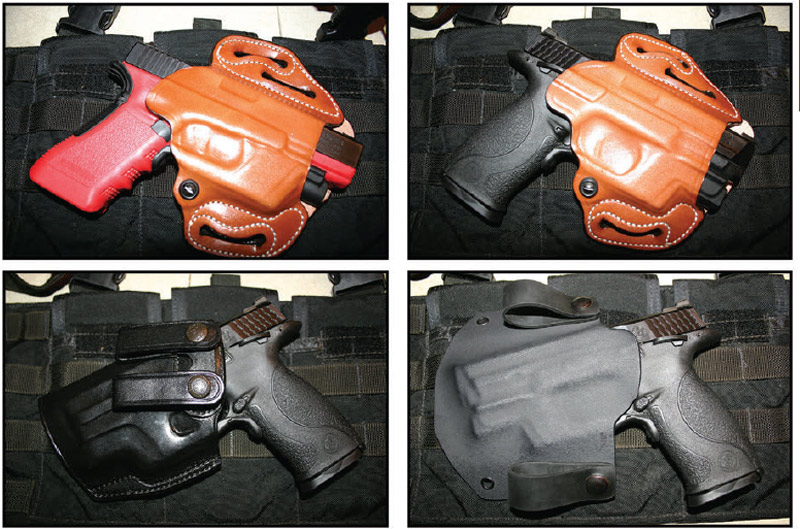
Lightguards are currently available for Glocks, S&W M&Ps, and 1911s (without rails) from Kimber, S&W, and Springfield Armory XD pistols.
Like all pistol-mounted lights, holsters are a big consideration. Crimson Trace worked with CrossBreed, DeSantis, Blade-Tech, and Galco before releasing the Lightguard. White Dog Holsters were quick to see the advantage of the Lightguard and offer holsters in IWB and OWB in both Kydex and hybrid Kydex/leather.
The Lightguard series is a good value overall. Depending on the model, street prices run from $125 to 150.
